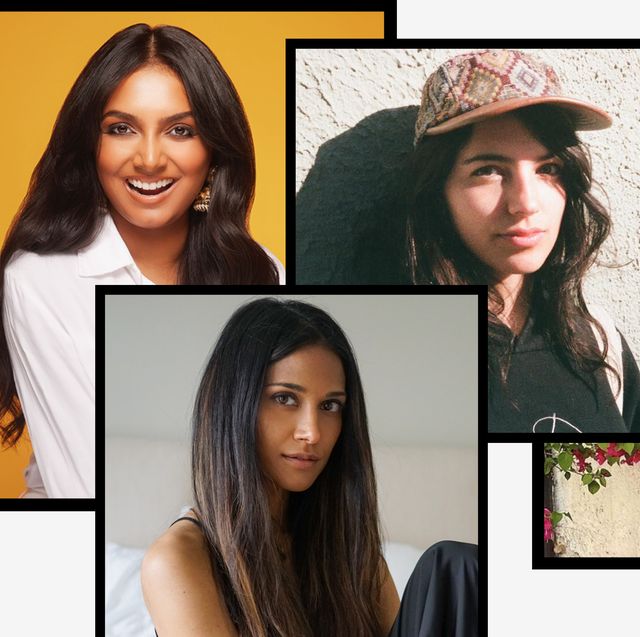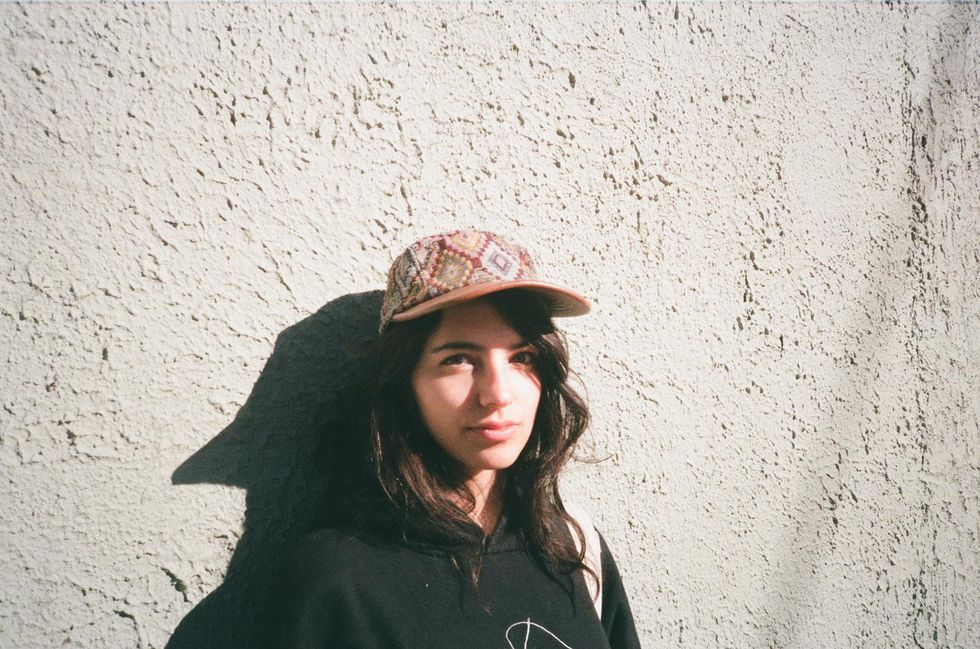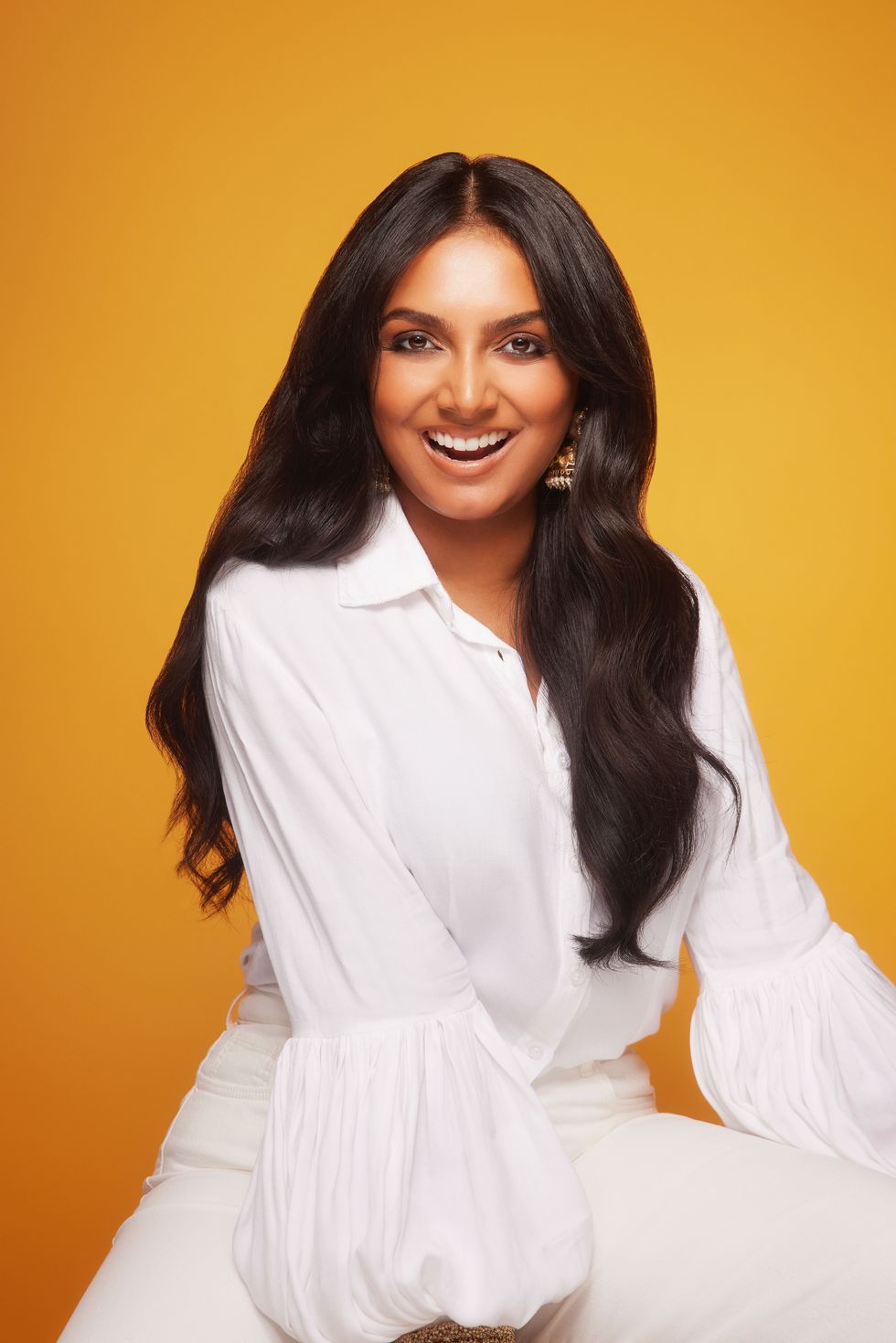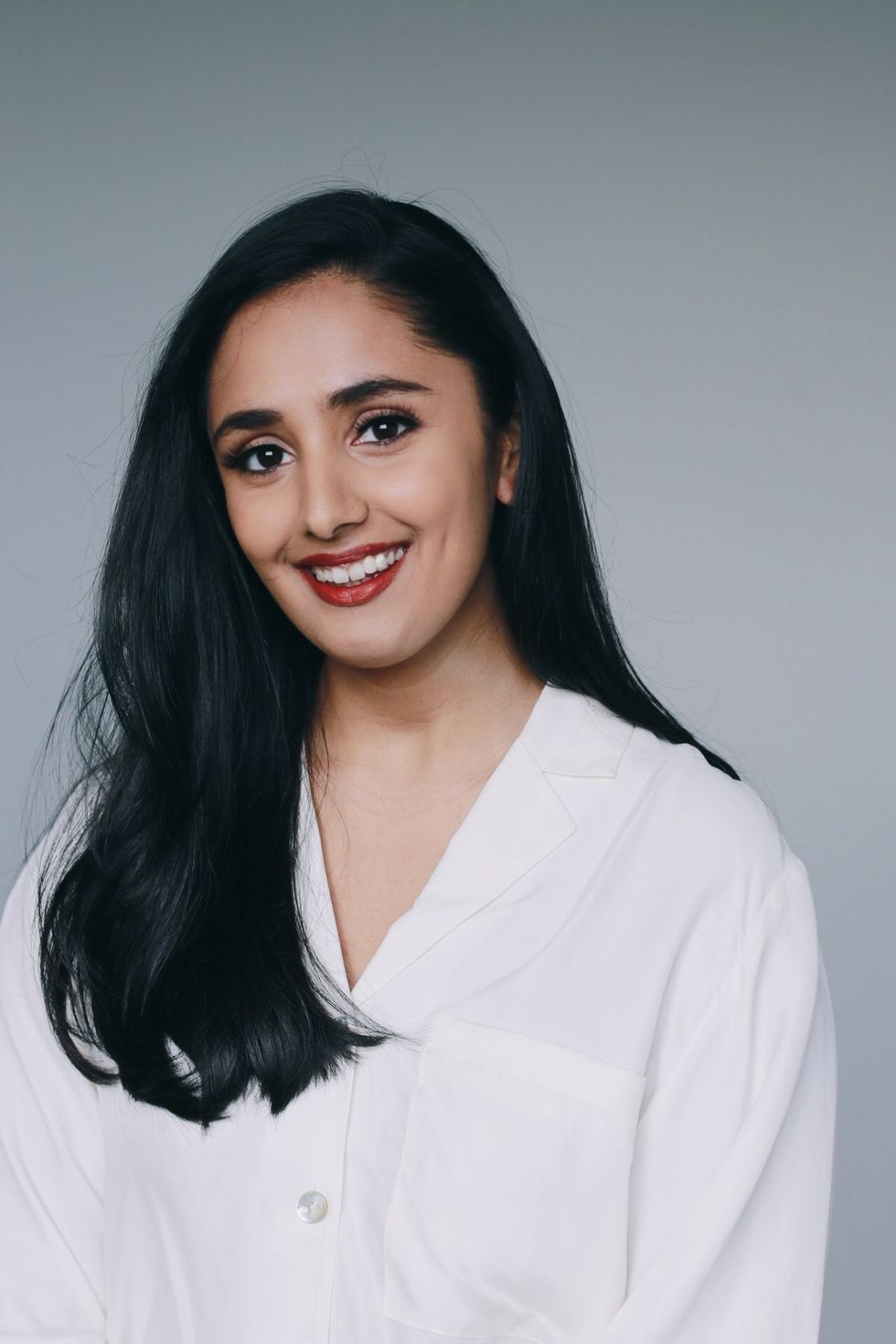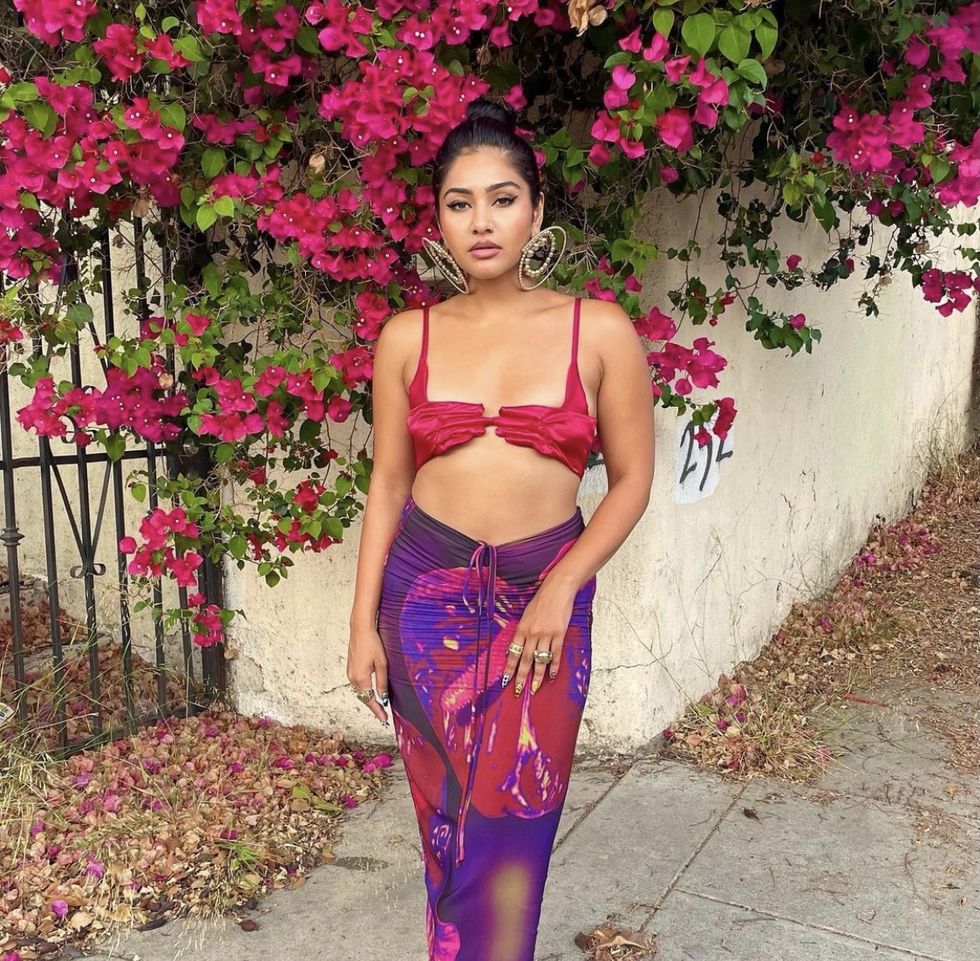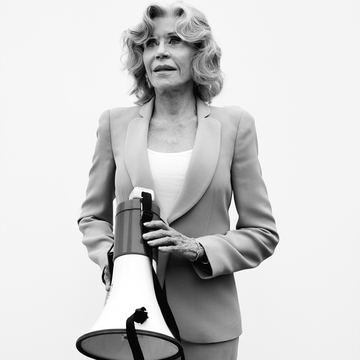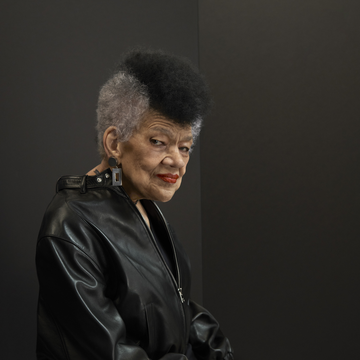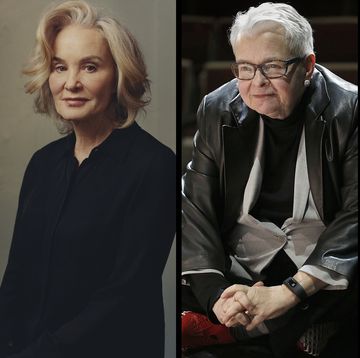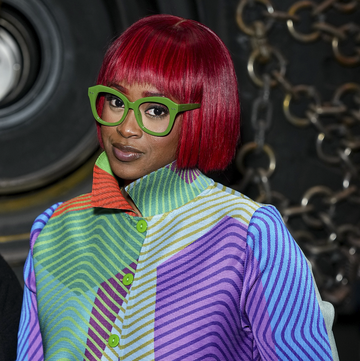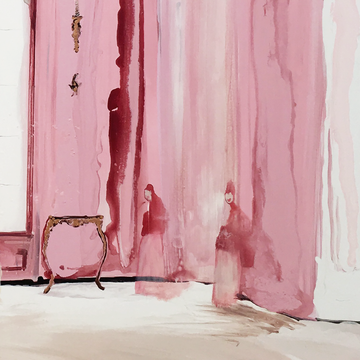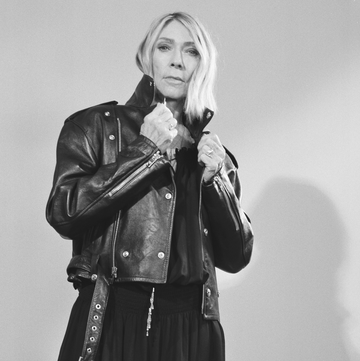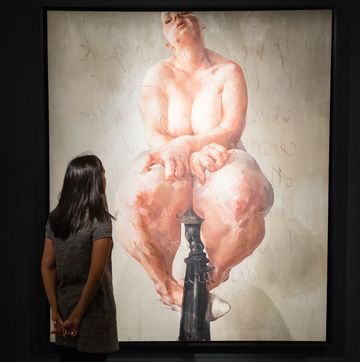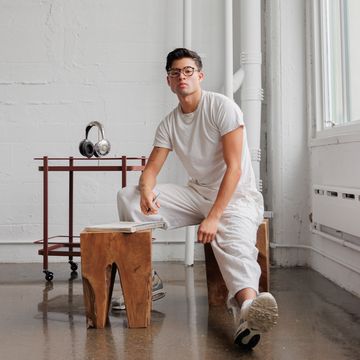Growing up as the eldest child and only daughter of Indian immigrants, I believed I’d be a doctor. I made the choice by my own volition at the ripe young age of five, and my parents would beam with pride as they shared the news with friends and family. I, in turn, would smile and try to envision a future where I was treating patients while wearing a white coat and stethoscope.
I say I “believed” I’d be a doctor because I embodied it in every way. As a premed student at Case Western Reserve University, I took dreaded organic chemistry and the MCAT (twice). I engaged in clinical and lab research, and then moved to Washington, D.C., to work in health policy while simultaneously attending graduate school at Georgetown University with the intention of eventually applying to medical school. On the surface, I was following the prescribed path to success, happiness, and fulfillment. Underneath, however, I was burned out and floundering to uncover my identity through bouts of depression and anxiety.
My parents immigrated to the suburbs of Chicago from the state of Uttar Pradesh in India during the ’90s. They left everything they knew—their motherland, native tongue, culture, cuisine, customs, and loved ones—to fly across the world to a foreign land where nothing was promised, but everything was possible. They forfeited established careers for entry-level jobs and traded their children being raised alongside grandparents and cousins for the rare international phone call or trip abroad. For every question they ask my brother and me in Hindi, a response in English follows, and, with that, a lingering sensation of the continued distillation of traditions throughout time. Each time I look in the mirror, my eyes meet a product of their hard work and sacrifice, and, for that reason, the stakes have always been high.
Still, there’s an often-overlooked sense of separation that comes with being raised as first generation—always one degree removed from belonging. You’re not American enough here, nor Indian enough there. It’s a constant reconciliation of two worlds, a balancing act of expectations lived through parallel lives and code-switching. The good beta at home, the high achiever at school or work, and the person you are when you’re alone … but who are you when you’re alone? And how do you navigate staying true to yourself as an individual while also remaining respectful of your family and roots? What does it mean to be a first-generation daughter of the diaspora?
If you had asked me years ago, I’d have begrudgingly responded that it meant abiding by the linear trajectory set by generations prior, meaning you had to go to college, obtain a respectable job, get married, buy a house, and have children. Today, I have a different answer. It means taking risks, honoring yourself, and speaking up for what you believe in. It means striving for financial independence and choosing your own partner in your own time. Sometimes it also means letting go of one “acceptable” or “conventional” career and charting your own course in another—one you feel far more passionately about.
It took me until my late 20s to understand why it was so difficult for me to become a doctor, a path that so many South Asians before me had been wildly successful in. Truth is, there was always a piece of me that knew the collective vision was not synonymous with my own. Now, inspired by the increasing number of Indian women who have taken matters into their own hands, I’ve begun trusting my intuition and discovering what works for me. Currently, that means journalism in New York City, but the possibilities seem endless since I’ve allowed myself to dream.
Below, meet six other Indian American trailblazers who are doing the same, from a former NASA engineer-turned-multimedia artist to an ear doctor who is building a public relations agency for the South Asian community.
Fatima Farheen Mirza, Novelist
“I have always loved writing,” says Fatima Farheen Mirza, who in 2018 at the age of 27, published her debut novel, A Place for Us, under Sarah Jessica Parker’s imprint for Hogarth. “What [initially] held me back was that it didn’t feel like there was a path for someone like me, especially back then.” Now a New York Times best seller, the novel explores the lives of a Muslim family in California using interwoven perspectives to tease out complex dynamics: the bonds that bring them together, as well as the differences that pull them apart. “Writing A Place for Us and feeling like I was devoted to it was a way for me to follow my dreams, because it felt like I was doing it for something outside of me,” she adds. “But actually, it was for me. [Writing] was the only thing I wanted to do with my life, and [the book] gave me the courage to be able to do it.”
During college at the University of California, Riverside, Mirza was initially studying to be a doctor, but simultaneously took creative writing courses to feed her implicit desire of one day becoming an author. “I took the premed path as a way to get time. I knew it would allow me eight years of life on my own,” the novelist says, alluding to the unspoken duty she felt to her family. “I was kind of in the process of lying to myself for a little.” She ultimately switched majors to creative writing and went on to attend the esteemed Iowa Writers’ Workshop, whose alumni include Ann Patchett and Flannery O’Connor. “If you’re going to go against the grain, find community that’s nurturing and understanding of your pursuit—people that are also making the same kinds of sacrifices and decisions,” Mirza recommends.
Despite facing the uncertainty that comes with striking out on your own, Mirza wouldn’t have it any other way. “Sometimes I look back at my life and where I started, and think about how impossible that life would seem to young Fatima, that nine- or 10-year-old Fatima,” she considers. “The thing I’m most proud of is that I fought for her.” Mirza had to drown out the noise—generational, familial, cultural, and societal expectations—to find a career that’s truer to her. “Everybody in the world is going to tell you who they want you to be and who they think you should be,” she says. “What they’re projecting on you is a version of you that makes sense to them. [A version] that doesn’t make them uncomfortable and force them to contend with the fact that there are many ways to be a woman or a Brown woman—to live as an individual.” Moving forward, she hopes to explore visual mediums and adapt A Place for Us for the screen.
Melanie Chandra, Actor, Writer, and Producer
Best known for her work portraying Malaya Pineda on CBS’s medical drama Code Black, Melanie Chandra recently produced and costarred alongside Surina Jindal and Kal Penn in Comedy Central’s Hot Mess Holiday, a clever ode to Diwali with two South Asian women leads at the helm. But her path toward commercial acting success wasn’t an easy one. Not only did she choose to pursue her craft after establishing a successful career in STEM, but Chandra, 36, recalls the lack of South Asian representation in the film industry as the biggest hurdle to achieving her dream. “I grew up first-generation Indian American, a child of immigrants, in the Midwest, and we had no ties to the arts or entertainment world,” she says. “I felt like an outsider.”
A Stanford University mechanical engineer by training, Chandra took a job at management consulting firm McKinsey & Company in New York City right out of college, and after 12-hour workdays, she’d attend acting and improv comedy classes at The Folster Studio and Upright Citizens Brigade. “I found myself living two distinct lives: One was a life that I knew I should be doing, and the other life was what I wanted to do,” she reflects. It wasn’t until her body told her, quite literally, to slow down that she put in her notice and made the shift to pursue acting full time. “One day, I showed up to work and had a grand mal seizure in front of my entire analyst class,” she explains. “I woke up at the hospital dazed and confused. I knew it was a sign that I needed to stop doing one thing and trust my instincts.”
Thankfully, her parents were supportive, and even encouraging, of her acting, having once abandoned their own aspirations at the behest of their obligations to their families. “My dad always had this dream to become a drummer,” she states. “Growing up in India, he’d play in the villages, but his dad said, ‘No, you have to work in medicine,’ so he became a medical technician.” For the most part, their concerns centered on more practical questions. “I had a lot of student loans to pay off, and it was not like my parents could do that for me,” Chandra says. “It was on me. But I reassured them. I said, ‘Trust me, I’m going to make it work—I’m going to pay off all my student loans and make you proud.’” Sure enough, she has, and, with several projects and pitches in development—such as a comedy series with Reese Witherspoon’s production house, Hello Sunshine, and an upcoming indie film, Onyx the Fortuitous and the Talisman of Souls—she’s just getting started.
Tanya Gupta, Art Director and Photographer
A former NASA engineer-turned-multimedia artist, Tanya Gupta, 25, had no idea she could spin her lockdown hobby into a nine-to-five job. “I didn’t think this would be a career or anything beyond something fun for me,” Gupta shares of her creative practice, which involves crafting kaleidoscopic digital compositions comprising bold motifs, surreal photo manipulations, and augmented reality. Over time, unpaid opportunities started turning into paid gigs, and validation from brands like Lancôme and Aerie—who commissioned her work for advertisements on social media—gave her the confidence to apply to the prestigious Adobe Creative Residency program in 2021, though she didn’t expect to get accepted on her first try. “I was going in with this attitude of, ‘Let me put my lottery ticket in; if it doesn’t happen, I’ll try again next year,’” she notes, regarding the competitive application process.
Prior to the start of the pandemic, Gupta had completed multiple internships at NASA, even turning down a full-time offer upon graduation, before accepting a job as a hardware developer and extended reality engineer at IBM in 2019. “I felt like I had the universe at my fingertips, so I took a step back,” she mentions. During lockdown, she used the extra time at home to watch YouTube tutorials and build on her design credentials in pursuit of her childhood dreams of becoming an art director. “My wall used to be covered in editorials and I’d tried, multiple times, to get the free trial of [Adobe] Photoshop,” she explains. “Every single time, it was so overwhelming, and I didn’t have the tools, time, or resources to devote to it.” Fast-forward to her 25th birthday, when Gupta created a series of self-shot, -styled, and -edited magazine covers, including a mock-up of Harper’s BAZAAR, which has now gone viral and amassed more than 179,000 views on TikTok.
Since starting this journey, Gupta has invested thousands of hours into fine-tuning her skills, using the hashtag #QuarantineArt to turn her friends’ and followers’ selfies into surreal art for Instagram. “I was getting more followers, because people wanted to see me turn them into a work of art or to see what the new piece was that I came out with that day,” Gupta says. “It was forcing me to keep building on my creative habit and skills regularly.” She credits the encouragement of her parents as a driving force, especially as she continues to innovate. “I kept trying different things. That was something my parents really instilled in me, and I know I’m in a place of privilege because not everyone has that opportunity,” she says. “Now, I’m doing something my mom and dad don’t fully understand, but they have this [unrelenting] faith in me.” When asked about the future, Gupta responds with a smile, “I’m setting myself up for an invite to the Met Gala in 2023.”
Deepica Mutyala, Live Tinted Founder and CEO
You may recognize Deepica Mutyala, 32, from her viral YouTube beauty tutorial wherein she covers her dark circles with red lipstick. Or from her recent TIME magazine feature, in which she is dubbed a Next Generation Leader as the founder and head of her beauty brand, Live Tinted. She even has her own version of the “Desi Barbie” in partnership with Mattel. But when asked about her recent successes, Mutyala attributes her wins to the South Asian community. “They always tell me to keep going, and I think it’s like they almost know I need to hear it,” she says. “I constantly hear it—Brown girls in my DMs telling me to keep going.”
After leaving her job as senior brand manager at Birchbox in 2015, Mutyala spent years making a name for herself in the beauty industry by networking and sharing content on YouTube and Instagram before launching Live Tinted in 2018 and their coveted Huestick, a four-in-one eye, lip, and cheek multitasker, shortly after. “Every ounce of energy went into how can I leverage each day to get me closer to my goals,” she reminisces about her time as an entrepreneur in New York City. Even with the uncertainty that comes with going off on your own, her parents bolstered her decision. “Sometimes I think back to how scared they must have been when I quit my job, but I’m fortunate that they supported me, because their confidence in me gave me the confidence in myself to go for it,” Mutyala says.
Originally a digital platform focused on inclusive and diverse beauty, Live Tinted is now the first South Asian beauty brand at Ulta and boasts more than 218,000 followers on Instagram alone. “There have been so many women of color that are in places of power that gave me an opportunity because they believed in me and knew that somebody that looked like me should also be standing next to them,” she reveals, naming actor and Honest Beauty founder Jessica Alba as one of her champions. “I feel this huge responsibility to do the same for others in the community.”
Monika Sharma, Product of Culture Cofounder and Creative Director
Faced with the choice of buying her private practice in Beverly Hills or doubling down on her efforts with Product of Culture, a collective she cofounded in 2017 with Archana Misra Jain that amplifies the voices of South Asian brands and creatives, Monika Sharma, 30, chose the latter. “I felt like our time is valuable, and I don’t know if I’ll get the chance to do this again,” she says. “And this is something I love. That created this sense of urgency where I just needed to dive in and try it.” Originally an audiologist focused on treating hearing loss and balance disorders, Sharma didn’t officially pack up her medical office until 2021 to invest in Product of Culture as a career. She bet on herself, and it paid off—within six months, Product of Culture was partnering with brands like Google, Instagram, HBO, and Netflix to host events that celebrate and spotlight the broader South Asian community (most recently, a Bridgerton-themed dinner hosted by Simone Ashley).
Still, passing up on the chance of owning your own medical practice is not an easy decision, especially when trading financial security for something far less defined. “As the child of immigrants, our parents worked so hard for us to have stable lives—one where we don’t have to worry about where that next paycheck’s coming from,” she recognizes. “I took everything that they wanted for me and mixed it all up. I think that’s been hard for them to accept.” Her mom, particularly, inspires her to keep going and push through doubts. “My mom has a Ph.D. and is a gold medalist in Sanskrit but gave up her career when she moved to the States. In her time here, she’s switched careers four times. Now, she’s at a job that she loves and has had for over 16 years,” Sharma fondly mentions. “Even though the stakes were quite different, that hustle is the same. Remembering who I came from makes me realize I was built to make it through.”
On a mission to make her parents and the community proud, Sharma, who recently launched Product of Culture’s public relations arm alongside Misra Jain, continues to work with clients on ensuring the South Asian narrative is included in the broader dialogue. “We are a bridge between the community and these larger corporations,” Sharma says. “That’s been a huge honor.”
Reva Bhatt, Creative Director, Stylist, and Brand Consultant
“What does it mean to be in fashion in 2014 as a Brown woman?” Reva Bhatt, now 29, once asked her younger self. For Bhatt, it meant dispelling monolithic points of view and overcoming outdated cultural beauty standards through chronicling her outfits online. “I was body-shamed for my curves, so I leaned on personal style to feel confident, and it became my thing,” she divulges. “By dressing not like how everyone else was dressing, I became known for how I dressed.” Armed with a camera and closet full of clothes, Bhatt launched her blog, Hybrid Hues, on Tumblr almost 10 years ago, having since migrated to showcasing her signature looks on Instagram and TikTok as @hybridhues. Known for blending Eastern and Western influences, Bhatt aims to make a sustainable impact through authentic visual storytelling. She’s worked her way up to styling a number of stars; her most recent endeavor involved Bangladeshi American hip-hop artist Anik Khan who was featured on a Spotify and Gold House billboard in Times Square.
Raised in the heart of Silicon Valley, Bhatt saw doctors and engineers everywhere she looked. “I came from a suburban, middle-class, South Asian environment where I was never a minority, because we lived in a bubble,” she explains. “Not knowing what I wanted to do was a direct result of being very sheltered.” With a burgeoning interest in social justice issues, Bhatt initially pursued the prelaw track at University of California, Irvine before leveraging her business degree to pivot into product management, with stints at Glossier, Wondersauce, and Code and Theory. “Being financially independent was urgent to me, because it gave me the freedom to be who I wanted to be and make the decisions I wanted to make,” she shares in reference to her decision to take on a corporate job.
Hustling around the clock for styling gigs in New York City and Los Angeles after hours or on the weekends, Bhatt began building a portfolio by collaborating with friends and upcoming artists like Raja Kumari and Raveena on music videos and editorial campaigns. “I would say, ‘I’m a stylist,’ and because of the way I dressed, they’d believe me,” she says. “I was creative directing and styling these projects before I even had the language to know that’s what it was called.” Eventually, working 70-hour weeks became unsustainable, and Bhatt, trusting her gut, decided to take the plunge and pursue freelancing full time. “I quit my job, and the day I decided to do that, I got a call that Kollin Carter [Cardi B’s stylist] was looking for another styling assistant [in Los Angeles],” she says.
At first, Bhatt’s parents were hesitant about her new direction. “I think there’s always going to be generational misunderstanding and not a full comprehension of my world,” she notes, considering their distinctive upbringings. Although, they eventually came around, with some convincing, when they saw her drive. “Now, [my dad’s] at parties in Silicon Valley with other Brown uncles and aunties in tech talking about how his daughter works with Cardi B,” she quips. Up next: Bhatt is producing an events series through ROOTED, a string of conversations that Bhatt hosts, in partnership with companies like Instagram, aimed at celebrating the broader South Asian community.
